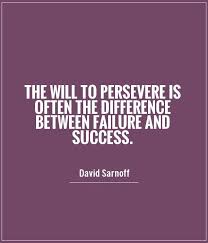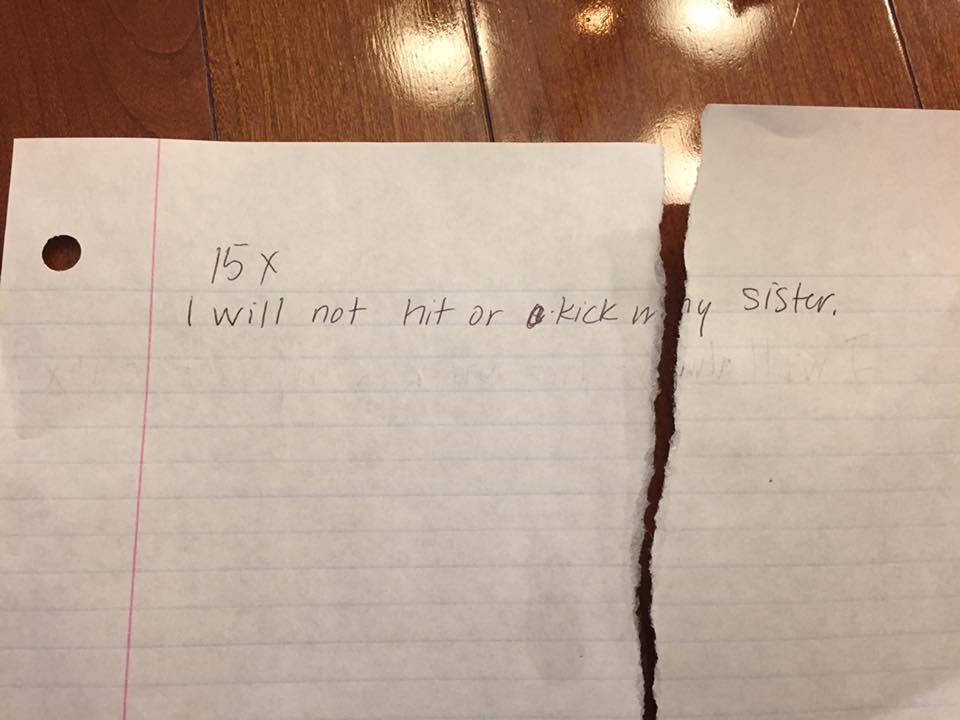Archive for March, 2017
What to Do When Your Report of Bullying is Downplayed at School
0I’ve had a number of parents seek me out in the last week, with similar accounts of incidents at different schools of their reports about bullying being downplayed, minimized, and swept under the rug. This post offers insight and understanding for what you can do if your reports of bullying are downplayed by others.
8 Keys to End Bullying at the Psychotherapy Networker Symposium in Washington DC
0Are you at the Psychotherapy Networker Symposium this weekend? If so, stop by booth #602! I’ll be there signing books on Saturday afternoon after my workshop. You’ll also have the chance to meet Lynn Lyons, Psychotherapist, Anxiety and Children, Courtney Armstrong Counseling, Leslie Korn, and Halko Weiss. #PNSYMP2017
“Turning Down the Heat” Course Gives Teachers Skills to Manage Classroom Conflict
0More than 80% of classroom problems are caused by 10% of students who challenge and undermine teacher authority. These students are skilled in frustrating adults and pushing the emotional buttons of even the most competent teachers.
Most teachers are irritated by the behavior of select, challenging students. This is to be expected. Few teachers are trained to understand and acknowledge these normal counter-aggressive feelings. Problems develop when competent teachers stay angry at a student. When a conflict develops, teachers are less likely to perceive accurately, think clearly, and reason coherently. Though competent teachers rarely initiate conflicts with students, they often keep them alive though their unintended, counter-productive reactions.
Turning Down the Heat documents four of the most common reasons that teachers become counter-aggressive with  select students. This unique training programs also offers specific skills to manage conflict in the classroom.
select students. This unique training programs also offers specific skills to manage conflict in the classroom.
Turning Down the Heat is a unique opportunity and the missing piece of most professional training programs. This course is about you and not your students. It leads to powerful insights which will change the way you think and behave when you are angry.
For more details or to find a training in your area, click here or email swhitson@lsci.org
LSCI with Hurt Children: A Red Flag Intervention Example
0Ever wonder what LSCI really sounds like, when put into action with children and youth? Here’s your chance to “listen in” on a Red Flag intervention, conducted in Belgium by one of our Master Trainers, Gerrit deMoor.
 Life Space Crisis Intervention with Hurt Children:
Life Space Crisis Intervention with Hurt Children:
A Red Flag Reclaiming Intervention
By: Gerrit deMoor, LSCI Master Trainer
Master Facilitator of the International Virtues Project
MFC Sint-Gregorius, Belgium
Introduction & Background
Kenny is an 11 year old boy. He has been in our residential care center for six years and I have been working with him, mostly on an individual basis, for about 3 years.
Kenny grew up as the oldest of six children and has been a witness and a victim of domestic violence. He was abused by his father and later, when his father was no longer allowed to have contact with his wife and children, Kenny was the victim of violence by his mother’s new partner. Being the oldest of the children, it seems Kenny is the scapegoat of the family. All the children are severely punished when things are not working out as mama’s partner expected, but Kenny usually suffers the most.
Once, when he was in crisis and overwhelmed by emotions, he told us that he is forbidden to talk about the situation at home, otherwise he would be punished even more. He never talked about it afterwards.
Kenny is verbally not very strong and mostly bottles up his feelings until he explodes. On these occasions, he often must be physically restrained due to his dangerous level of aggression. Even then, he only calms down due to fatigue. When an adult tries to use LSCI after a crisis situation, Kenny has typically gotten himself back under control and lets no one come close to his inner world. This story is about an LSCI I recently did with Kenny. It was the first time ever that he reflected upon a crisis and that he really could formulate insight into his behavior.
Stage 1: Drain Off
I was called by a colleague to restrain Kenny because he was physically aggressive and he was a danger for other children and for the adults. Two colleagues and I brought him to the quiet room. I stood in the doorway in order to show some nearness towards him and to try to get connected with him. He seemed to calm down and I asked him if he had enough self-control to go to his room with me. He agreed. When we were in his room, I asked him if he was all right. He affirmed. I told him I was glad that he settled down quiet quickly. I saw he relaxed physically.
Stage 2: Timeline
I got back to his anger and asked what happened that made him that angry.
Normally he blocks such questions, but now – to my surprise – he started talking: He told me that he and John had a quarrel over a football. It was not clear who was the owner of the ball they were playing with. Kenny told John that it was his property, while John was convinced that the ball belonged to the group. While telling this, Kenny tells me that he had found the ball a couple of weeks ago and that he went by all of the groups to ask whose ball it was. It belonged to no one, so Kenny considered the ball to be his.
But as he is talking to me, it turned out that the fight with John started earlier: the children were playing soccer and at a certain moment John had taken the ball and told the other children to run away from Kenny. Kenny ignored the teasing, but he told John to ‘give my ball back’. And then John said the ball belonged to the group and was not Kenny’s. That was the start of the quarrel about the ball.
The educator had heard the discussion, but as she was a temporary staff member, replacing someone who was ill for a couple of weeks, she didn’t know the real owner of the ball. So she told the children that she would put the ball aside in order to find out the real truth about it when other staff members would show up. As a result, Kenny got angry at my colleague and pushed her away in order to get his assumed ball. For safety reasons, we have a procedure that children that are physically aggressive are brought to the quiet room. So that is what happened to Kenny.
I asked Kenny what my colleague tried to obtain by putting the ball aside. “Was she trying to hassle you like John did?” He kept silent for a few seconds. I could see he was thinking and wondering if he could take the risk of being honest with me. “No” he said.
“What was her goal?” I asked.
Silence again.
“She was trying to stop the fight between me and John?” was his rhetorical question.
I acknowledged his courage to think things over and share his thoughts with me.
Stage 3: Central Issue
Then, I summarized his story: “So Kenny, you were playing football with some other children. At a certain moment John takes the ball and orders the other children to run away from you. To me, this looks like teasing. But you ignored the teasing. That is really thoughtful and strong. But you want your ball back and you say that to John. When John says it is not your ball, you both end up in a huge discussion. Right?”
He affirms.
“Now, Ms. Kathy hears about your fight. She’s not sure about the ball. She wants no fight between the two of you and she decides to put the ball aside and ask her colleagues. But then you start a fight with Ms. Kathy.”
I summarize with a neutral voice; like I am reading the news bulletin.
He is clearly embarrassed with this summary.
Stage 4: Insight
There is again a moment of silence and suddenly he says: “This happens often to me.” I asked for more details about this statement. “Well, it often happens that I am angry at someone. But when I get angry, I get angry at everybody who is in my neighborhood.”
Now, that sure is a hell of an insight when we are dealing with a Red Flag Reclaiming Intervention. I am surprised and happy with so much insight.
To be sure, I asked him: “So you were in fact angry at John, but you acted your anger out at Ms. Kathy. But you are not really angry with Ms. Kathy. Do I understand this well?”
He nods.
Stage 5: New Skills
Immediately, Kenny wants to apologize to Ms. Kathy. But as it turns out that he doesn’t know very well how to do that, so we practice how to make a sincere apology together. The plan is to tell Ms. Kathy the insight phrase he just told me.
And then, I invite him to look at the future. “If this often happens to you, how can we prevent this from happening?”
We think together and we come to the conclusion that when he senses that he is getting angry: pounding heart, fast breathing, etc, he asks to go to the quiet room by himself, with no restraining by the adults.
Stage 6: Transfer of Skills
With all of this insight and future plans, we go to Ms. Kathy. I made the introduction and he had a good talk with my colleague.
Hopefully, this is the start of a profound behavioral change for Kenny together with a stronger connectedness between him and adults he can trust.
About the Author:
Gerrit De Moor is a Master Trainer for the LSCI Institute, working in Belgium. Gerrit graduated as an industrial  engineer in 1987 and started working in this field. He says he never felt at home in the industrial world, however, believing their view on man and the world made it hard for him to fit in.
engineer in 1987 and started working in this field. He says he never felt at home in the industrial world, however, believing their view on man and the world made it hard for him to fit in.
In 1990, Gerrit started a course on orthopedagogics and four years later earned his degree in this field. By ‘coincidence,’ he started working with children and youth with EBD. Gerrit soon became a specialist in developing individualized programs for prosocial skills.
In 2001, after 9/11, Gerrit says he was searching for a more positive framework to utilize with these children. He studied and implemented the paradigm of non-violence by a Belgian anthropologist: Pat Patfoort (http://www.patpatfoort.be/ENG-Pat.htm). One year later, his team was invited by Dr. Franky d’Oosterlnck to take part in the first European LSCI-training in Europe. The LSCI method turned out to match perfectly in the paradigm of non-violence.
Gerrit was invited by Dr. Franky D’Oosterlinck to assist at his trainings and in 2007, Gerrit traveled from Belgium to Columbus, OH to become certified as a Senior LSCI Trainer.
Since then, Gerrit has successfully conducted many LSCI Certification trainings and is actively involved in the EFeCT group (www.efect.be). In 2013, he was honored by the LSCI institute as a Master Trainer.
Gerrit is also a Master Facilitator of the Virtues Project. (www.virtuesproject.com) and author of a book on the issue of punishment. He is currently working on a translation in English of the Dutch book. For more information on Gerrit, please visit: https://be.linkedin.com/pub/gerrit-de-moor/50/920/154
Contact information:
Gerrit De Moor
e-mail: gerrit.de.moor@outlook.com
For more real-life examples of LSCI interventions, please visit https://www.lsci.org/learn-more/real-examples-of-lsci-interventions-with-kids/
Passive Aggressive Notes from Kids
0I have a love/hate relationship with all of the useless bits of information from my friends’ lives that I can find on Facebook. While I don’t always care so much about the heat intensity of an old college friend’s coffee, the naughtiness of a a neighbor’s pet, or the endless series of alternative facts from our political climate, I do keep trolling on for the occasional gems of daily life…such as this one.
Recently, a friend posted these photos of her attempt at punishing her son for his aggressive behavior toward his sister…and his passive aggressive response to them both (photos posted with permission):
https://www.psychologytoday.com/blog/passive-aggressive-diaries/201703/passive-aggressive-notes
Mom gives 8-year old son a simple writing assignment as a consequence for his aggressive behavior. He is to write “I will not hit or kick my sister” 15 times on a piece of paper:
8-year old son counters in this most passive-aggressive way: “I will always hit and kick my sister 15 times.”
This is a must for inclusion in my next Angry Smile training!
How to Connect with Hard-to-Like Students
0LSCI training is based on the belief that every young person has a story. Using LSCI’s specific strategies and 6-stage process, caring adults facilitate the process of a child telling his/her story in such a way that he feels genuinely accepted and understood. This, in turn, paves a path for lasting changes in perceptions, thoughts, feelings, and behaviors. Find out more here: https://www.lsci.org/professionals/#item-4
Then, check out this article from Edutopia, filled with great strategies to connect with young people and make them feel safe enough to tell their story.
Be Known for Being Kind
0I was walking through the halls of my school this morning when a 3rd grade student saw me and told me she had brought in a book from her local library because it made her think of me. When I asked what the book was called, she couldn’t remember the exact title, but said she knew I’d love it because it was about a girl who wanted to BE KNOWN FOR BEING KIND. (Heart swells.)
We walked to her cubby to get the book…and she was right…I love it! This title and author are new to me and I thought they might be new to you too. Do yourself a favor and check out Melissa Parkington’s Beautiful, Beautiful Hair by Pat Brisson.






